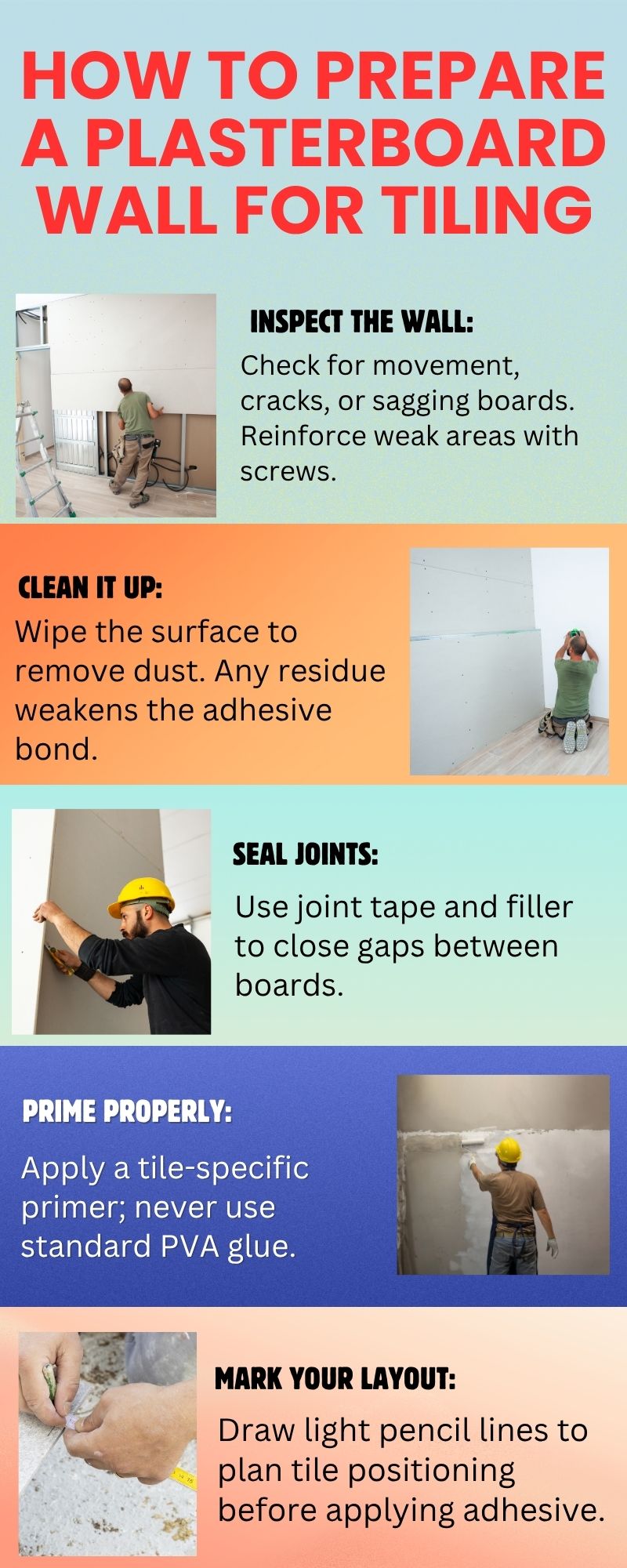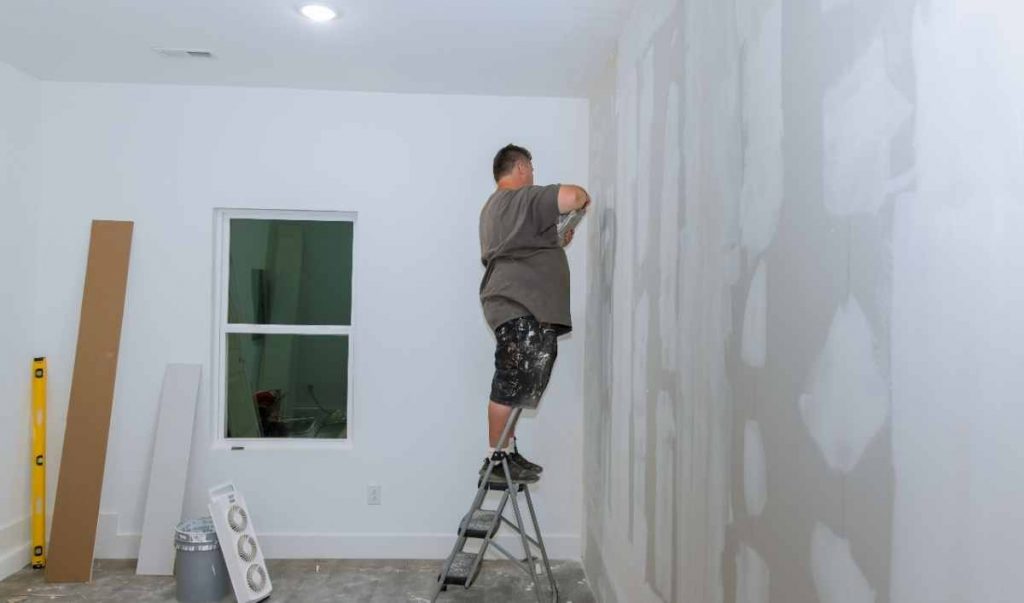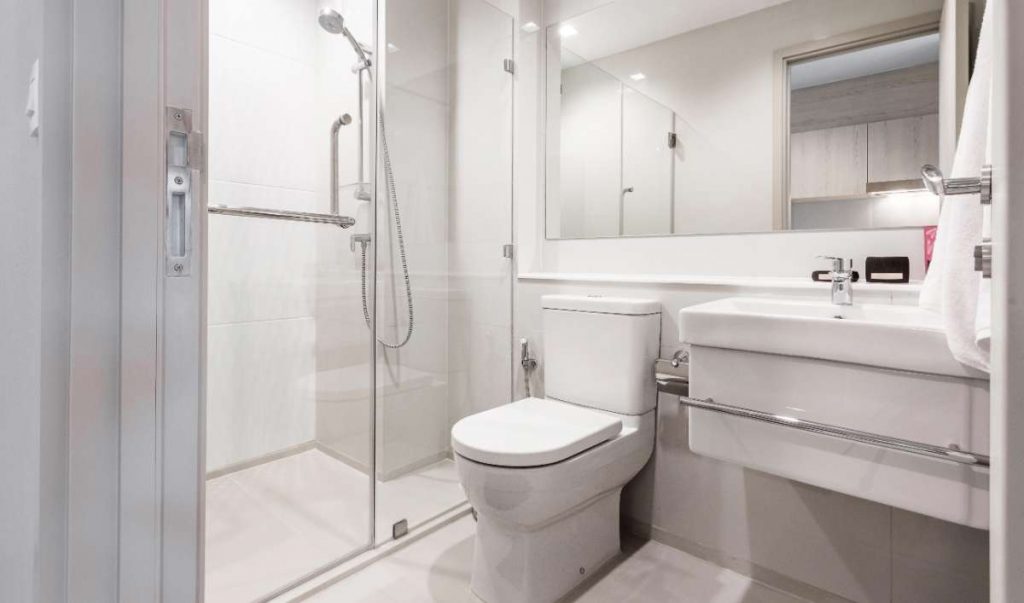You’ve got a fresh wall and shiny new tiles, but here’s the big question: can you tile onto plasterboard or plaster? The short answer is yes, you can, but it’s not quite as simple as slapping on adhesive and hoping for the best. The surface needs to be dry, firm, and properly prepared.
If you live in Islington, Camden, or Hackney, where homes often have older walls or recent refurbishments, understanding the right tiling method makes all the difference. This guide explains exactly how to prepare and tile over plasterboard or plaster for a professional, long-lasting finish. Read on to learn more.
Why It Matters
Tiling directly onto unprepared plaster or plasterboard might look fine at first until tiles start loosening or cracking. Moisture, weak adhesion, and surface movement can all cause trouble later.

A little preparation ensures:
- Your tiles stick firmly and evenly.
- The surface resists moisture.
- You avoid costly repairs down the line.
Think of it this way: tiles are only as good as what’s underneath them.
Understanding the Difference
Before we jump into methods, let’s clear up what we’re dealing with:
- Plasterboard: A smooth, factory-made board used for walls and ceilings. Ideal for tiling when it’s moisture-resistant (often green in color).
- Plaster: A hand-applied surface layer over brick or plasterboard. It’s slightly porous and takes time to cure before tiling.
Knowing your wall type is key because the preparation process varies slightly for each.
Can You Tile Directly Onto Plasterboard?
Yes, you can tile directly onto plasterboard, as long as it’s:
- Dry, clean, and dust-free.
- Properly fixed to the wall frame.
- Not painted or skimmed with plaster.
Here’s how to get it right:
- Check the condition: Make sure the plasterboard is secure, without movement or soft spots.
- Use moisture-resistant boards: Especially in bathrooms or kitchens where humidity is high.
- Prime the surface: Apply a tiling primer (not PVA) to control suction and help adhesive bond better.
- Choose the right adhesive: Use a flexible, waterproof adhesive suited for plasterboard.
Tip: If your plasterboard has been skimmed, treat it like plaster, not bare board.
How to Prepare a Plasterboard Wall for Tiling
Here’s a step-by-step on how to prepare a plasterboard wall for tiling:

- Inspect the wall: Check for movement, cracks, or sagging boards. Reinforce weak areas with screws.
- Clean it up: Wipe the surface to remove dust. Any residue weakens the adhesive bond.
- Seal joints: Use joint tape and filler to close gaps between boards.
- Prime properly: Apply a tile-specific primer; never use standard PVA glue.
- Mark your layout: Draw light pencil lines to plan tile positioning before applying adhesive.
This method gives your wall the grip it needs for a flawless tile finish that lasts.
Can You Tile Over Plaster Walls?
Yes, but with some caution. Plaster is more delicate and absorbs moisture easily. Here’s how to handle it: Can you tile over plaster walls safely?
- Check the plaster’s age: It must be fully dry at least 4 weeks old.
- Test the surface: Rub your hand over it. If dust or chalk comes off, it needs sealing.
- Prime it: Use a stabilising primer to strengthen the surface.
- Avoid heavy tiles: Standard plaster walls can hold up to around 20 kg/m². Heavier tiles need extra support, such as backer boards.
In homes across Camden and Islington, where old plaster walls are common, sealing and priming properly prevents peeling or cracked tiles later on.
Can You Tile on Fresh Plaster?
It’s tempting to start right away, but can you tile on fresh plaster? Not yet. Fresh plaster contains moisture, which prevents tile adhesive from setting correctly. Always wait until:

- The plaster changes colour from dark to light (a sign it’s dry).
- You’ve applied primer and allowed it to cure.
Patience pays off; rushing this step often leads to failed adhesion and lifting tiles.
Can I Tile on a Plaster Skimmed Wall?
Yes, but only if it’s fully cured and you use the right preparation. Here’s how to handle it: Can I tile on a plaster skimmed wall?
- Wait for at least 4 weeks after skimming.
- Prime the surface with a tile adhesive primer.
- Check for hollow sounds or soft spots; fix before tiling.
- Use a lightweight, flexible adhesive for better hold.
Skimmed walls look smooth but can be fragile, so handle them gently during tiling.
Working with Brick or Solid Walls
If you’re dealing with plaster applied over brick, treat it like solid plaster. Ensure it’s clean, flat, and sealed. Fill deep gaps before tiling and use a strong, cement-based adhesive for a secure bond. For homes in Hackney with older brickwork, this preparation step is essential for even tiling results.
Pro Tips for Perfect Results
Now that you know the basics, let’s look at some pro tips to make your tiling project smooth and mistake-free.
- Never tile over damp or recently plastered walls.
- Avoid tiling on painted or wallpapered plasterboard.
- Always use primers made specifically for tiling.
- Double-check wall strength before using heavy tiles.
- Test adhesive compatibility; some primers work best with specific brands.
London’s Trusted Team for Bathroom Excellence
At AnimAnimus Construction, tiling isn’t just part of our work; it’s our craft. We understand London’s diverse wall types and the challenges that come with them.

Here’s how we ensure lasting results:
- Detailed preparation: We test and seal every surface before tiling.
- Tailored materials: We use the right adhesives and primers for each wall type.
- Skilled workmanship: Every tile is aligned, level, and sealed for years of durability.
From Victorian plaster walls in Islington to modern bathroom plasterboard in Hackney, our team delivers reliable, waterproof, and beautiful finishes every time.
FAQs
Question 1. Can I tile directly onto plasterboard?
Answer: Yes, but only if it’s clean, unpainted, and moisture-resistant. Always prime before tiling.
Question 2. How long should I wait before tiling on new plaster?
Answer: Wait at least four weeks or until it’s completely dry and light in colour.
Question 3. Do I need to prime plasterboard before tiling?
Answer: Yes, use a tile primer; it helps adhesive stick and prevents moisture damage.
In a Nutshell:
So, can you tile onto plasterboard or plaster? Absolutely, with the right preparation and patience. Whether it’s sealing joints, priming surfaces, or waiting for fresh plaster to dry, every step ensures your tiles stay perfect for years.
If you’re planning a bathroom refurbishment or tiling project in Islington, Camden, or Hackney, let the experts handle it. Contact AnimAnimus Construction today for flawless preparation, expert installation, and a result that looks stunning and lasts.
